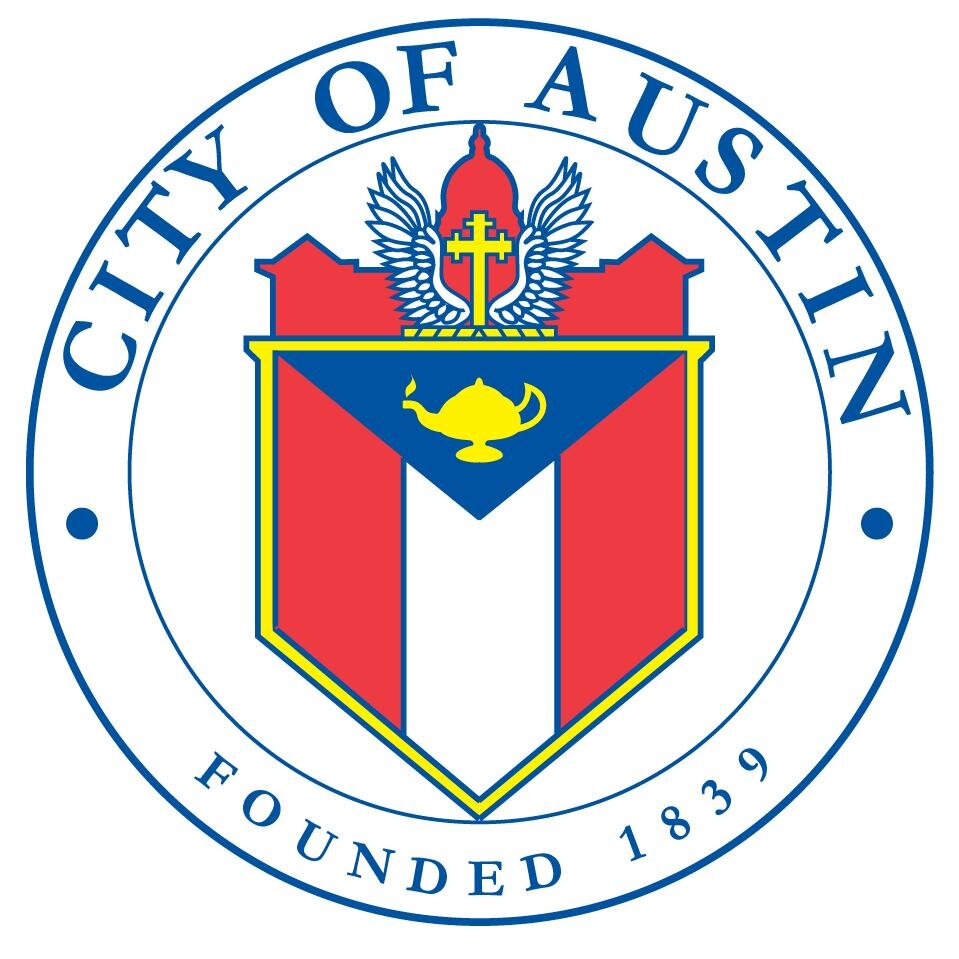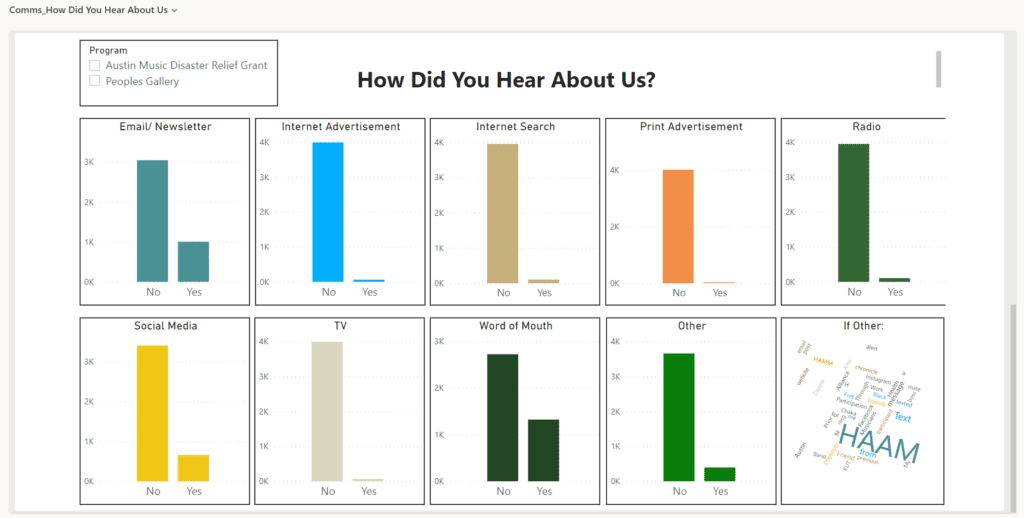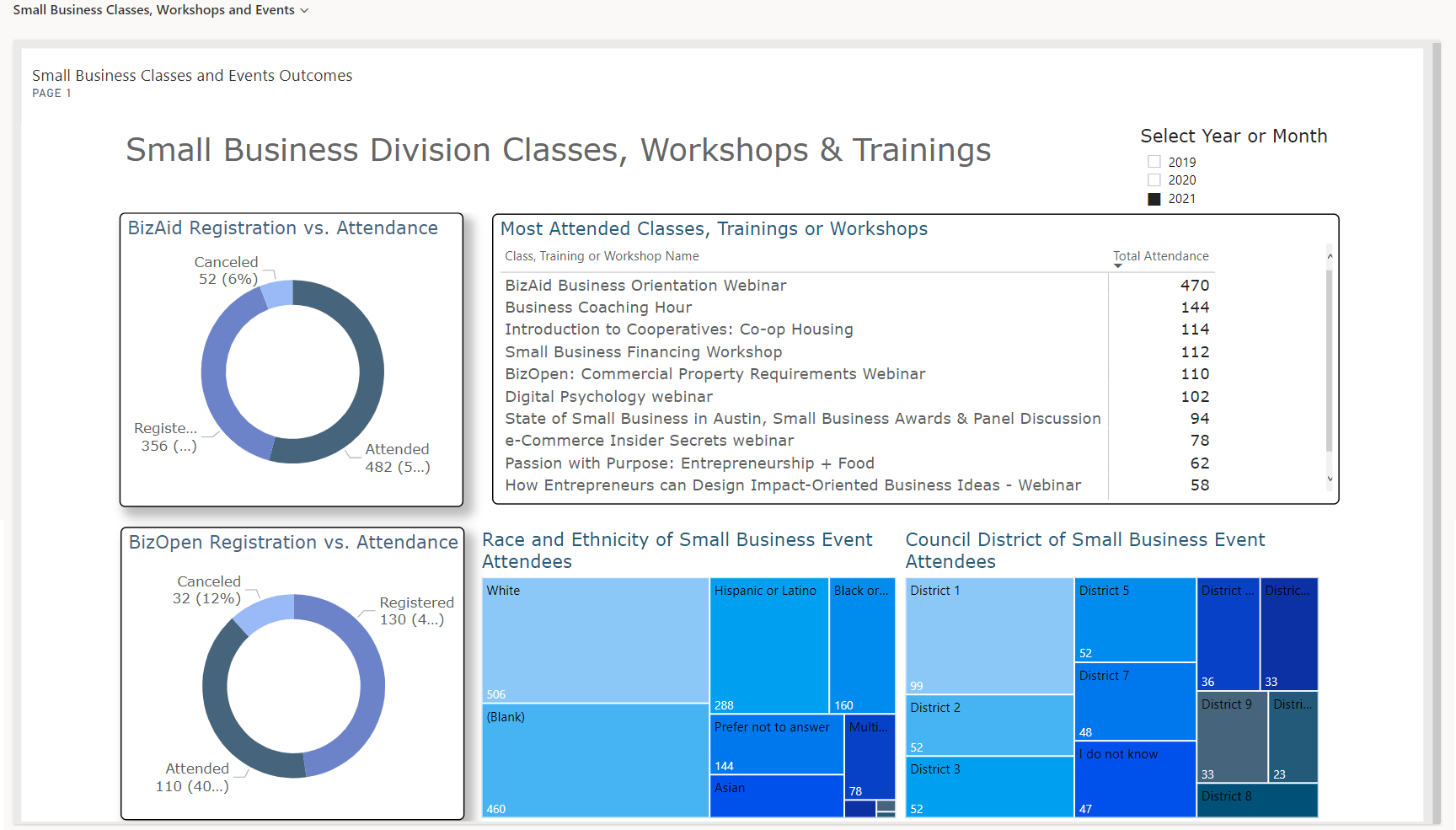This website uses cookies so that we can provide you with the best user experience possible. Cookie information is stored in your browser and performs functions such as recognising you when you return to our website and helping our team to understand which sections of the website you find most interesting and useful.

City of Austin Grows an Equitable, Competitive Economy for Everybody

Modernizing service and program delivery of the Economic Development Department with CRM in the cloud
The Economic Development Department of the City of Austin collaborated with Sikich to deploy a constituent relationship management platform built on Microsoft Dynamics 365 CRM. It also decided to augment CRM with a portal that serves as the organization’s digital entry gate for the communities it serves. These technologies, which replace various stand-alone tools and disparate access points, make it easier for the Economic Development Department to deliver its programs. With a central repository for all data, the department can provide transparency to other city departments and the public, often using dashboards to show progress to KPIs or demonstrate how it serves Austin’s diverse populations.
City of Austin outcomes achieved
- View all information related to constituents and their engagements with programs and services in one consolidated resource.
- Offer constituents a centralized, convenient access point to Department offerings.
- Connect with constituents previously unaware of the Economic Development Department. from anywhere.
- Advance local, economic growth and monitor the progress of businesses, nonprofits, and creatives.
- Demonstrate progress to KPIs and equitability goals to city leadership and the public.
- Collaborate more efficiently with third-party providers.
- Enable team members to access cloud-based CRM from anywhere.
- Proactively recommend program and service offerings.
Watch the full playlist of videos from the City of Austin to hear their story and get a deeper understanding of their mission, work, and impact. This is a unique opportunity to see first-hand the efforts and results of Austin’s Economic Development Department and how Microsoft technology has helped drive their success. Don’t miss the chance to be informed and inspired by their story.
DRIVING ECONOMIC SUCCESS ACROSS THE METROPOLITAN REGION
The mission of the Economic Development Department at the City of Austin is to promote a competitive, sustainable, and equitable economy for all. The Economic Development Department runs six divisions dedicated to Cultural Arts, Business Expansion, Heritage Tourism, Music and Entertainment, Redevelopment in neighborhoods and commercial districts, and Small Business. All through the pandemic, the department also plays a key role in helping organizations recover quickly and take advantage of funding and support resources provided by the city.
Sylnovia Holt-Rabb, Director of the Economic Development Department, explains, “Our department works with residents, small businesses, creative professionals, and nonprofits to provide them economic opportunity to be successful. We also manage various construction projects for city-owned assets that we want to bring back to the tax roll.”
OUTGROWING FRAGMENTED AND INEFFICIENT TECHNOLOGIES
For years, Economic Development Department team members relied on technology, especially their mobile phones, to document conversations with businesses, creatives, nonprofits, and other constituents. Smartphone apps helped them initiate business retention and expansion (BRE) forms and gather information. Team members used spreadsheets, email, and tools like Mailchimp and other communication platforms to manage engagements and record information about constituents and their use of department programs and resources.
Over time, the Economic Development Department acquired a wealth of valuable information, but it was in many disparate files and tools, which made it difficult to understand and work with it. It was difficult for team members to have a complete view of constituent engagements with the Economic Development Department. Because they couldn’t compare data sets, they lacked visibility of interactions between constituents and other city departments. Institutional knowledge and information in the hands of team members were at risk when they left the organization, because there wasn’t a centralized, simple way to share them.
For constituents, in turn, engaging with the Economic Development Department and other municipal entities wasn’t a simple matter either. It wasn’t always clear to them which city website was the right access point for what they needed or how to learn about helpful programs and resources.
OUTCOME ACHIEVED
View all information related to constituents and their engagements with programs and services in one consolidated resource.
EXPERIENCED TECHNOLOGY PARTNER DELIVERS CRM IN THE CLOUD
Economic Development Department leaders explored ways to use technology to simplify and improve constituent and program management. The city’s IT organization had an enterprise agreement with Microsoft, and city departments already used Microsoft Forms, Microsoft Power Apps, Microsoft Power Automate, Microsoft Power BI, and other Microsoft solutions. Casey Smith, Strategic Planning Manager at the Economic Development Department, says, “We knew the competitors, and, based on our procurement process and evaluation criteria, Microsoft Dynamics 365 CRM was the top choice for what we wanted to accomplish.”
The same procurement industry search and review also surfaced Sikich as a possible technology partner. In addition to strong Dynamics 365 expertise, Sikich offered the Economic Development Accelerator, a solution built on Microsoft Dynamics 365 CRM and specifically designed to meet the needs of economic development organizations. A demo led by Sikich consultants began a fruitful collaboration that continues today. “The Sikich team really gets what we’re doing,” Smith says. “They are great in terms of creativity. They’ve really done a great job using their knowledge and their many, many years of experience to create a powerful solution for us.”
In 2018, the Economic Development Department collaborated with Sikich to implement Dynamics 365 CRM in integration with the Economic Development Accelerator. This CRM solution serves as the department’s single, unified resource for all information related to constituents and their engagements. Team members can securely access the cloud-based system from anywhere, which was a great advantage when remote working became the norm during the pandemic. “Having a centralized source that’s in the cloud has been great for productivity,” Smith notes.
CRM TECHNOLOGY PLATFORM FOR DELIVERING DEPARTMENT SERVICES
From initial contact to program applications and using Economic Development Department services and resources, the department manages constituent relationships and communications in the CRM solution. Through CRM, the department team also sends communications and surveys to constituents and tracks their reading and responses. “CRM is a centralized location for us to monitor the progress of businesses, nonprofits, and creatives, and help our local economy grow,” Smith explains. “It helps us track client data and see how people have participated in activities with us. It allows us to follow their journey and intervene when they could take greater advantage of incentives, services, and programs.”
Sikich integrated the CRM system with ClickDimensions marketing automation software for Microsoft Dynamics 365 and Eventbrite event management. Eventbrite expands the reach of the Economic Development Department to a larger audience that might not otherwise learn about its offerings. Eventbrite forms align with CRM data stores to allow reporting and analytics segmentation that considers city council districts, ZIP codes, ethnicity, race, gender, and other criteria, enabling the department to work with clean, consistent data. Smith says, “When somebody registers for a program in Eventbrite, the information drops right into our CRM. We have not only new clients who we wouldn’t have reached otherwise, but we’re also able to see how they’ve engaged in our program.”
“The Sikich team really gets what we’re doing. They are great in terms of creativity. They’ve really done a great job using their knowledge and their many, many years of experience to create a powerful solution for us.”
– Casey Smith, Strategic Planning Manager at the Economic Development Department
SIMPLIFYING ENGAGEMENTS FOR CONSTITUENTS
The Sikich team also connected the CRM with data sources in other city systems, including the city’s vendor registration system and council district map. Through an intermediate SQL Server table, the CRM system can automatically pull matching information when constituents engage with the Economic Development Department. “It’s easier for our clients not to have to enter redundant information,” Smith comments. “We can reduce that redundancy through this connection Sikich helped us with.”
To help Economic Development Department team members excel in serving constituents, the department implemented a number of automated workflows in the CRM to complement these integrations to simplify their tasks. “Integrations and workflows have been great resources to improve our efficiency and the reliability of the data in CRM,” she adds.
CENTRAL FRONT DOOR FOR ACCESSING SERVICES AND RESOURCES
Taking the focus on constituents’ experiences and the streamlining of processes for both them and Economic Development Department team members to a higher level, the department collaborated with Sikich to augment CRM with a portal built on Power Apps, which went live early in 2022. Neither clients nor team members need to feed CRM with data that already exists in other systems, including those operated by the city’s partners for specific services.
Earlier, as Smith describes, “During the pandemic, we were trying to get money out the door as fast as possible, because our community was hurting. However, clients and program participants had to use multiple platforms and systems to get the services and funding they needed.” With the portal in place, however, the public can engage with the Economic Development Department and other city resources in a different manner. “The city of Austin is aiming for community members to engage with our programs, and we want them to know what’s available,” Smith says. “Now, the portal is our digital front door. We don’t have to send anybody elsewhere. We can open opportunities, and our clients have control over their data.”
The portal technology not only populates forms with constituent data the city already has, but goes a step further. “Based on information people provide, the portal reveals programs and services they may be eligible for and which they didn’t know about,” she adds. In the portal, clients can apply for Economic Development Department programs in the eight languages that are most commonly used in the Austin metropolitan area.
“Now, the portal is our digital front door. We don’t have to send anybody elsewhere. We can open opportunities, and our clients have control over their data.”
– Casey Smith, Strategic Planning Manager at the Economic Development Department
DEPARTMENT DATA BECOMES TRANSFORMATIVE
With its CRM and portal systems, the Economic Development Department has a complete view of its constituents. Smith says, “Microsoft Dynamics 365 CRM and our portal have been transformational in the way that we store data in our department. Prior to this, we didn’t have a centralized record or a way to compare data sets. And now we do. As a department, we know who our clients are. We know how our relationships span across department divisions.” For example, when clients access the Economic Development Department’s courses and trainings and also connect with the department’s Cultural Arts division, understanding the full breadth of their skills and goals in context makes it possible to assist them with resources and recommendations that might not have been possible before.
Smith notes, “We have an awareness with a whole picture of what a client’s business or enterprise is all about. And, we can provide Dashboard highlighting how participants in two Economic better customer service as a result.”

Dashboard highlighting how participants in two Economic Development Department programs first heard about them
The city of Austin follows a comprehensive, strategic plan that requires all departments to report on their key performance indicators (KPI) in a transparent manner. The Economic Development Department makes extensive use of analytics and dashboards created with Microsoft Power BI to make CRM data intelligible and share the results of its programs and KPI achievements. Austin also mandates departments to provide full transparency in disclosing how they deliver their programs and services across the city’s populations and regions. The CRM system offers all the data that matters in this effort and enables the extensive in-depth reporting and segmentation the city needs.
HOW TO GENERATE TRUST AND DEMONSTRATE PROGRESS
The Economic Development Department’s dashboards are viewable for the public at the department’s website and also at the city’s COVID-19 Economic Recovery site. Smith notes, “The dashboards allow us to be transparent and hold us accountable to the way funds are distributed, which has helped us work toward our goal of delivering funds, programs and services equitably. Elected officials have remarked how much they appreciate being able to see the segmentation and distribution of funds.” Commenting on the work of the Economic Development Department during the pandemic, Holt-Rabb adds, “We launched 20 unique programs during COVID, and each iteration of data that we’ve captured allows us to make better graphics so that Austinites can go in and see who we serve. And it’s very transparent and crystal clear.”
This dashboard gives an overview of small-business participation in classes, trainings, and workshops offered by the Economic Development Department

An ongoing affordability crisis impacts the entire city, especially its non-white residents. That adds urgency to the need to disclose how the Economic Development Department serves constituents of diverse ages, races, ethnicities, and genders across the metropolitan council districts and ZIP codes. “We can clearly demonstrate the impacts of our programs among the various stakeholders we work with, and report in detail how people are engaging or not engaging with our programs, or if they were selected or not selected for any program,” says Smith. “That’s gone a long way to help us build community trust.”
Holt-Rabb uses an example to highlight her transformed experience when she presents to other teams in city government. “When I am standing in front of the music commission and walking them through who did we serve and what district are they in, and being able to have that data in one central location and our third parties that we work with being able to dial in, input reports and information that they’ve gathered, [CRM] has been a game changer,” she says. “[Commission members] have been very pleased with what we’ve been able to demonstrate with the use of this system.”
MORE USE CASES, GREATER VALUE FROM CRM
The Economic Development Department continues to expand its use of the CRM system and portal. For example, through the portal, the department’s collaborations with third-party partners can become more flexible and controlled. Partners offer services and capabilities, such as professional coaching or financial advice, which augment the Economic Development Department’s capabilities. The department assigns unique web roles to these organizations, so they can see some information on a need-to-know basis—enough to help them deliver their services or understand constituents, but without access to all departmental data assets.
“The biggest benefit of working with Sikich is their knowledge of what’s possible and how to achieve it, so we don’t have to maintain all those technical skills in-house. The consultant teams have the creativity to apply that knowledge and skill to whatever our needs are. I certainly hope to be able to work with them on future projects.”
– Casey Smith, Strategic Planning Manager at the Economic Development Department
This aspect of the department’s CRM and portal use will likely expand, providing a capability that didn’t exist before. “The ability to work with third-party partners in our portal is a cool thing,” says Smith. “It’s very nimble and a real benefit to the community. We can work with one contractor this year, then shut down their access and work with somebody else next year. Instead of them using their systems, we can retain all the information that pertains to their engagements in our CRM.”
Based on its experience in the Sikich engagement so far, it’s highly likely that the Economic Development Department will continue collaborating with the consultancy. “The biggest benefit of working with Sikich is their knowledge of what’s possible and how to achieve it, so we don’t have to maintain all those technical skills in-house,” Smith says. “The consultant teams have the creativity to apply that knowledge and skill to whatever our needs are. I certainly hope to be able to work with them on future projects.”
Key benefits of working with Sikich
With the deployment of Microsoft Dynamics 365 CRM with Sikich Economic Development Accelerator, the City of Austin saw integrations with marketing, events management and other core systems. The increased visibility of data with dashboards created with Microsoft Power BI and a portal built on Microsoft Power Apps, gave the City of Austin access to the right information at the right time.




